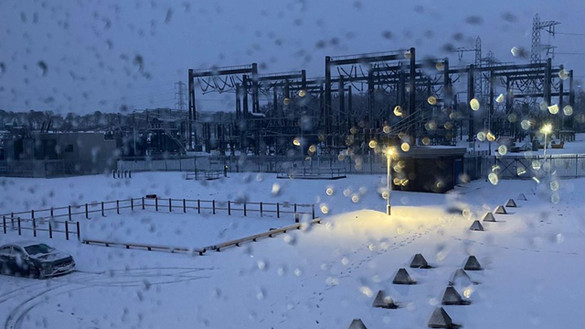
ESO: What does coronavirus mean for electricity in Great Britain?
Millions of people rely on us every day to keep the lights on and we want to reassure everyone that we have plans in place to keep the network working throughout the coronavirus outbreak. In this Q&A, the Head of our Control Room Roisin Quinn looks at what Coronavirus means for electricity in Great Britain.

How are you protecting your colleagues and making sure your control room can keep operating during the outbreak?
Our role as the Electricity System Operator means that we need to have plans in place to cope with a whole range of different scenarios, including a pandemic. We have activated that plan and taken a number of steps to ensure the safety of our colleagues and keep the network operating smoothly.
Regardless of Coronavirus, our control rooms are secure sites with restricted access and a range of measures in place to make sure they can continue to operate in challenging circumstances. For example, we have fully operational back-up locations and our engineers are trained across multiple roles. These measures have been strengthened further with the segregation of critical employees and a complete restriction on any visitors.
What effect will large numbers of people staying at home have on the grid and demand for electricity?
First, it’s important to say we don’t anticipate any issues in continuing to reliably supply electricity. We have forecasting and planning teams who are closely monitoring this situation, looking at the experiences of other countries and analysing what it might mean for electricity demand in Great Britain.
Our modelling has looked at domestic, commercial (shops and offices for example) and industrial demand across a range of different scenarios. We expect that with more people staying at home, rather than demand surging it will reduce; largely owing to a decrease in energy use from industrial consumers, which is likely to be greater than the increase in domestic demand. The situation is changing rapidly, but we do not expect any issues with supply meeting demand.
Will it mean a different daily pattern of electricity use?
Electricity demand normally follows a regular daily pattern; rising as we get up and get to school or work, plateauing throughout the day and then peaking at dinner time when we get home. We don’t expect significant changes to this but, again, it’s something we’re monitoring closely.
How much will electricity demand drop by?
Government guidance suggests we are still in the early stages of this situation and social distancing measures may remain in place across society for some time. Each change in government policy may also impact demand further, so it’s hard to give a definitive figure of reduced demand at this stage.
In addition, regardless of Coronavirus, electricity demand remains particularly influenced by the weather and seasonality, with colder and darker nights leading to increased demand.
What does lower demand mean? Will fewer power stations be called on to provide power? Can more power can be delivered by renewable energy sources?
As system operator, it’s just as important for us to manage lower demands for electricity as it is to manage the peak demands – it's a different set of challenges that we plan for, and are used to dealing with.
The Coronavirus situation is unprecedented and moving so quickly that, again, it’s hard to be definitive – but there is potential for gas to make up less of the mix of electricity. However, it will still need to be called on by our control room engineers to manage key properties of electricity, such as inertia and frequency, so any change may be negligible.
We’re currently working on our Summer Outlook report, designed to inform the energy industry and support its preparations for the summer ahead, and hope to share more detail then.
What about the wider picture? Fixing pylons, overhead lines and customers’ bills? Will that be impacted?
The electricity industry is complex with lots of different groups and companies playing different roles. At National Grid ESO, it’s our job to move high-voltage electricity around the grid and pass it to local distribution network operators, who then reduce the voltage and distribute electricity to homes and businesses around the country.
Electricity generators, transmission and distribution networks, the electricity system operator and energy suppliers all have a part to play and work hand in hand. Great Britain’s network is one of the most reliable in the world and everyone in the industry has well-tested contingency plans for each of their individual roles. We’re all in regular contact and working together to ensure we continue to operate as normal.
To learn more about trends in demand and where our electricity is coming from, take a look at our latest monthly electricity report.


